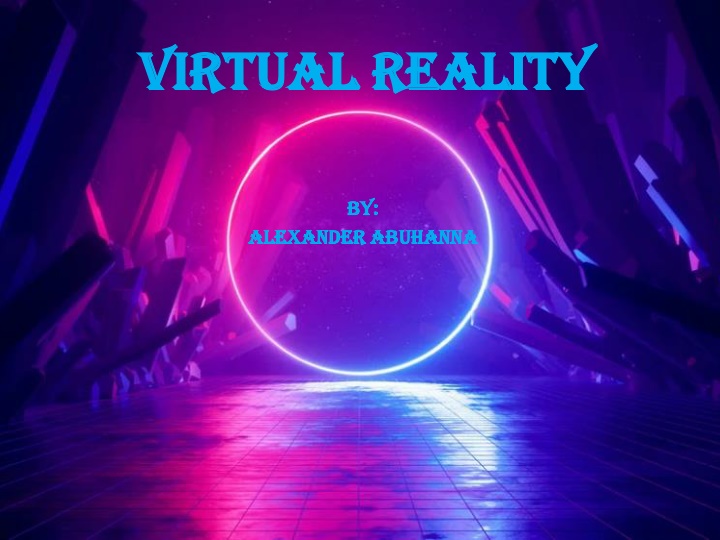
Virtual Reality: Pros, Cons, and Applications
Virtual Reality (VR) is a computer-generated simulation that offers immersive experiences in various industries such as entertainment, education, and healthcare. Explore how VR is created, its real-life applications, and the pros and cons of this evolving technology.
Download Presentation

Please find below an Image/Link to download the presentation.
The content on the website is provided AS IS for your information and personal use only. It may not be sold, licensed, or shared on other websites without obtaining consent from the author. If you encounter any issues during the download, it is possible that the publisher has removed the file from their server.
You are allowed to download the files provided on this website for personal or commercial use, subject to the condition that they are used lawfully. All files are the property of their respective owners.
The content on the website is provided AS IS for your information and personal use only. It may not be sold, licensed, or shared on other websites without obtaining consent from the author.
E N D
Presentation Transcript
Virtual Reality Virtual Reality By: By: ALEXANDER aBUHANNA ALEXANDER aBUHANNA
What is virtual Reality What is virtual Reality? Virtual Reality (VR) is a computer-generated simulation of a three-dimensional environment that a person can interact with using special equipment, such as a headset. It offers a completely immersive experience and has applications in entertainment, gaming, education, training, and more.
How is VR made? How is VR made? Virtual Reality (VR) is created using a combination of hardware and software technologies. The process involves designing a 3D virtual environment, writing software to control the display, audio, and user interaction, creating hardware such as a headset and handheld controllers, testing and debugging, and finally deploying the VR experience.
virtual reality in real life virtual reality in real life - In the healthcare sector, surgeons can perform surgeries without being physically available in the operation room, and this helps in improving patients life in general practice, as it implies to other practitioners in this industry - in space industry, it allows astronauts to experience real situations to interact with properly. - Driving simulations train students on a safe level; to be more experienced even when they are exposed to harder conditions
Pros and cons of VR Pros and cons of VR Pros Cons High cost: VR hardware and software can be expensive, making it inaccessible to many consumers. Health and safety concerns: There are concerns about the long-term health effects of using VR, such as eye strain and motion sickness, as well as potential safety risks associated with using VR in certain environments. Limited content: The VR content available is still limited, and it may take time for the industry to catch up with demand. Isolation: VR can be isolating, as users are completely immersed in a virtual world and disconnected from their physical environment and other people. Immersive experience: VR provides a completely immersive experience that can be more engaging and memorable than traditional media. Improved simulation and training: VR is being used in various industries, such as medicine and military, to simulate complex procedures and scenarios, allowing safer and more efficient training. Improved accessibility: VR technology has the potential to make entertainment and educational experiences more accessible to people with disabilities or limited mobility. Increased creativity and expression: VR provides a new medium for artists, game developers, and other creatives to explore and express their ideas.
Overall Overall Overall, virtual reality (VR) provides fascinating possibilities, but it also has a number of drawbacks and restrictions. Before making a VR investment, it will be critical to consider the potential advantages and disadvantages as technology develops.
